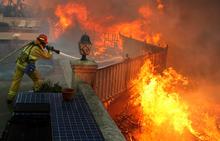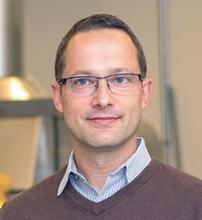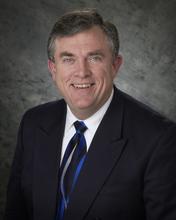The Engineering Laboratory at NIST, Gaithersburg, hosted its second annual symposium, August 7-8, 2019, featuring the Disaster Resilience Grant Research Program

recipients. Of the original 172 disaster resilience research proposals 12 were awarded totaling just over $6 million. Additionally, the 2018 Disaster Resilience Grant Research Program review process is currently underway and we hope to make the announcement of successful applicants in the near future.
As in the previous symposium, recipients convened to share insights and findings based on the research topics funded under the 2016-NIST-DR-01. Recipients presented their research and findings from the first two years of their awards from topics that include Disaster and Failure Studies, National Earthquake Hazards Reduction Program, Wind Impact Reduction, and Reduced Ignition of Building Components in Wildland-Urban Interface (WUI) Fires Project. Additionally, NIST researchers presented their work that supports advancement in U.S. Disaster Resilience.
KEYNOTE August 7th:
Building a Resilient Society in Response to Wildfires
This talk will give an overview of what can be done to overcome the challenges that our societies face in front of the growing threat posed by wildland fires, with an emphasis on the issue of the Wildland-Urban Interface (WUI). After defining the numerous challenges that we all face and their roots, the different ways to address the problem will be presented. Finally, an overview of some of the research that can be developed to support solutions will be provided, with an emphasis on the research conducted at WPI, in collaboration with its partners from government agencies and other universities.
Professor Albert Simeoni

Professor Albert Simeoni is the Department Head of Fire Protection Engineering at Worcester Polytechnic Institute. He holds a Bachelor’s Degree in Physics and Applications from the University of Corsica in France (1994), a Master’s Degree in Mechanical Engineering from the university of Aix-Marseille in France (1996), and a Ph.D. in Physics, from the University of Corsica in France (2000).
He is an internationally recognized expert in fire and wildland fire and fire science with over 120 journal papers, conference papers, and book chapters. He has more than 20 years of experience developing experimental, analytical, and numerical techniques to better understand fire dynamics and to predict fire and wildland fire behavior. Before joining WPI, he held academic leadership positions in fire research in the UK (university of Edinburgh) and in France (university of Corsica). He has also experience as a consultant in fire science in the US and has spent over 10 years volunteering and working as a firefighter in France. Starting as a volunteer firefighter, he ultimately led all aspects of fire, wildland fire, and rescue operations, in the capacity of Chief of Fire Station. He is Associate Editor of the International Journal of Wildland Fire, a principal member of the NFPA Technical Committees on Wildland Fire Management and on Wildland and Rural Fire Protection, a member of the NFPA 921 subcommittee on Wildland Fire Investigation, and the treasurer of the International Association of Wildland Fire.
KEYNOTE August 8th:
The Evolution of Structural Engineering to Resist Earthquakes
Strong earthquake ground shaking is an extreme loading for an ordinary building. For the collection of structures that form a system to house, serve, and employ a community, a strong earthquake if usually a true disaster. This talk will review significant developments in our understanding of ground motions and structural response, with a focus on the consequent changes in engineering practice over the long term. While the primary objective to date has been preservation of life, there is an increasing emphasis on the functionality of various classes of structures, which is a first step in addressing resilience. A strong understanding of how we arrived at our present state will assist in planning the path to an improved future state.
Dr. James Harris, President
J. R. Harris & Company, Denver, CO.

Jim Harris is well versed in structural engineering practice and research. His work experience includes consulting practice in Denver since 1968 and continued with the establishment of J.R. Harris & Company in 1984. From 1975-1981 he was a research structural engineer at the National Bureau of Standards in Gaithersburg, MD. He has designed or evaluated thousands of structures ranging from dwellings, to high-rise buildings, industrial facilities, and renovations of historic buildings to name a few. His research has focused on the loading and response of structures, particularly earthquake and snow loadings, with a second focus on improving the formulation and use of engineering standards. He is a member of the National Academy of Engineering and an active member of several committees that produce national standards for structural engineering practice and is a former chair of the committee that produces the standard ASCE/SEI 7 Minimum Design Loads for Buildings and Other Structures, and its subcommittee for seismic design. He has also served on ACI Committee 318 which prepares Building Code Requirements for Structural Concrete and on the AISC Committees that prepare the Specification for Structural Steel Buildings and the Seismic Provisions for Structural Steel Buildings. Jim received his BSCE from the University of Colorado, Boulder, in 1968 and his MSCE and PhD from the University of Illinois, Urbana in 1975 and 1980, respectively.
Update:
10/30/19
Thank you to everyone who participated in the symposium. Presentation videos are now available in the 2019 Disaster Resilience Symposium Presentation Gallery. Please stay tuned for the next symposium tentatively scheduled for late summer or early fall 2020.
Courtyard by Marriott Gaithersburg Washingtonian Center
Located in: RIO Washingtonian Center
204 Boardwalk Pl, Gaithersburg, MD 20878
Rooms from $179. Stay August 6-August 8th.
A hotel shuttle is available to and from NIST.
Book by: Tuesday, July 9, 2019
NON U.S. CITIZENS PLEASE NOTE: All foreign national visitors who do not have permanent resident status and who wish to register for the above meeting must supply additional information. Failure to provide this information prior to arrival will result, at a minimum, in significant delays in entering the facility. Authority to gather this information is derived from United States Department of Commerce Department Administrative Order (DAO) number 207-12.
*New Visitor Access Requirement: Effective July 21, 2014, Under the REAL ID Act of 2005, agencies, including NIST, can only accept a state-issued driver’s license or identification card for access to federal facilities if issued by states that are REAL ID compliant or have an extension. As of Monday, January 30, 2017, Federal agencies will be prohibited from accepting driver’s licenses and identification cards from the following states for accessing federal facilities: Maine, Minnesota, Missouri, Montana and Washington. For further details, please visit our Campus Access and Security page.
Acceptable Photo Identification:
For Non-US Citizens: Valid passport for photo identification
For US Permanent Residents: Permanent Resident/Green card for photo identification

